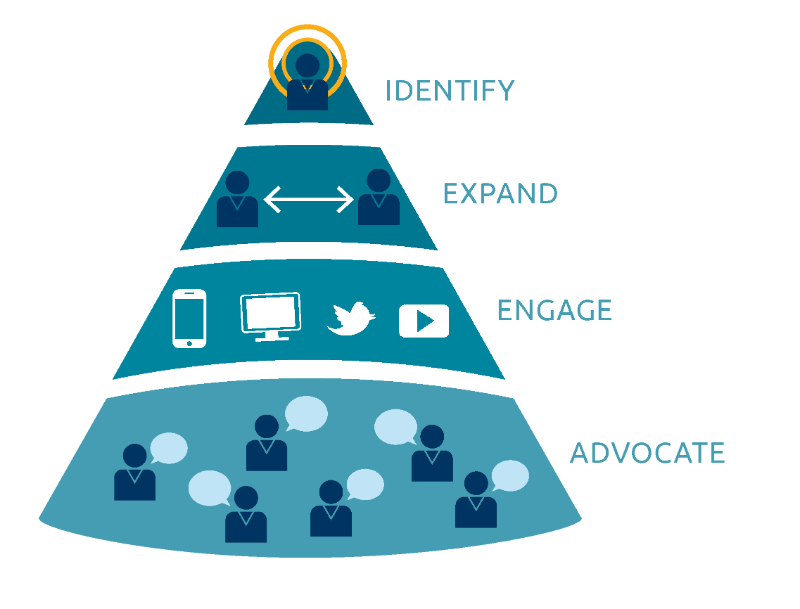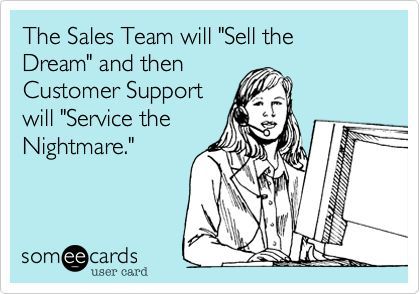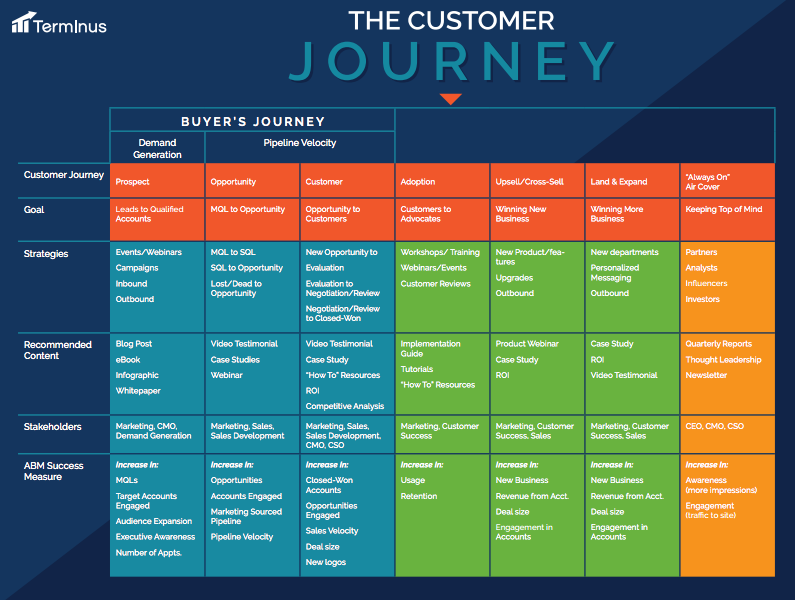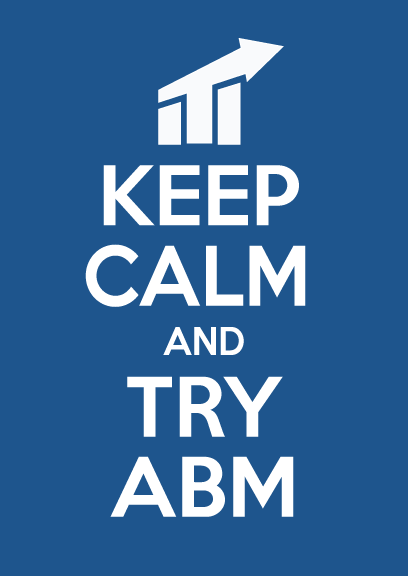It seems like every time I write something about account-based marketing (ABM) it’s the “first-ever.” For example, the first-ever ABM MarTech stack, writing the first-ever ABM book, or hosting the first-ever #ABMChat on Twitter. The reality is, we are truly doing something with ABM, which has never been done before.
Even my friends at G2 Crowd and TrustRadius both now recognize ABM as a new category, which is fantastic!
Considering all these firsts, I wanted to take the time to introduce the concept of ABM and share a framework. I sincerely hope this will help B2B marketers put the concept of ABM into practice. Let’s get the basics out in the open.
So what is account-based marketing?
The central idea around ABM is your accounts are going beyond the traditional B2B buyer’s journey to a true customer experience. The path to doing ABM successfully means the B2B marketer’s role has to evolve from being a coin-operated lead generator to a true demand and revenue-driven marketer.
It’s through the focus on pipeline and revenue that marketing becomes more aligned with sales. There’s one “smarketing” team in your B2B organization. I got this term from my friends at Vidyard. They have a guy on the team dedicated to smarketing. Do you dig it?!
This also means recognizing your customers now as “accounts” and not just leads that you have to educate, entertain, and delight, which requires the smarketing team to work more closely with customer success to create raving fans or “customer advocates”.
Here’s the new model that I’ve shared over the last few month that has now turned into a #FlipMyFunnel movement.
 My point: Start with best-fit accounts and focus 100% of your time, money, energy, and resources on them to drive real results.
My point: Start with best-fit accounts and focus 100% of your time, money, energy, and resources on them to drive real results.
As a CMO myself, the more I think about it, the more I understand how my role needs to evolve from being focused on traditional lead generation. It’s not because I need more work to do (trust me I don’t) but I recognize now that the way I’ve looked at leads before was wrong.
It’s not about getting as many leads as possible, but about finding the ideal contacts who are the right fit for your business. We need to call these best-fit prospects “accounts.”
These accounts don’t think about your company in the form of departments such as marketing, sales, and customer success. Your accounts think of your company as a single entity who provides them with a product or service. You’ve played the role of the decision-maker.
If you want something, you ask for it. We live in a society where people expect an answer quickly. Your decision-makers think the same way.

This is why marketers need to think about the overall customer experience. We need to stop thinking of our potential new customers as leads and start calling them accounts. We must think about the entire experience these accounts have when they’re interacting with our organization.
What happens to your accounts along the buyer’s journey? How can we ensure they have an amazing experience as our customers? When we look at the overall lifecycle of an account, these are the questions marketers needs to ask ourselves, as well as our teammates in sales and customer success.
Traditionally, B2B marketers are responsible for the buyer’s journey that is simply the path of lead to closed-won revenue. Most marketers don’t even think about this path in its entirety. B2B marketers often find themselves responsible for lead generation or, the fancy term, demand generation.
If the marketing team’s responsibility is generating new leads, I promise you that you can come in the office every Monday, have a few meetings and tell your team what to do then generate a ton of leads.
The point is not that we are becoming freakishly smart marketers, but the reality is that lead generation is now part of a rinse and repeat playbook. You can do events, webinars, blog posts, ebooks, sponsored posts, and boom! You are an awesome B2B marketer. Not so much anymore.
My point: Today, lead generation is easy and demand generation is hard. The difference in the two is quality and knowing your best-fit accounts to go after.
Now with account-based marketing, pipeline and revenue generation is the goal and not lead generation. Marketing is now on the same path with sales and customer success. It’s going beyond the buyer’s journey and extending it into a customer experience.
If that’s the case, then why isn’t the marketing team doing everything in its power to help the top 20% of your accounts have an amazing customer experience? As marketers, we can’t just say, “customer success has got that covered.”
That’s not what teamwork is all about! The marketing team should also be accountable for upsells/cross-sells, increasing adoption, decreasing churn, landing and expanding, and providing an always on air-cover across all channels that meet your customer needs.
At Terminus, an account-based marketing company, we examined over 250 ABM campaigns from nearly 75 customers. We saw modern B2B marketers doing the following seven strategies and, more importantly, measuring each of the strategies in a completely different way.
Forward-thinking CMOs are not just looking for leads or clicks anymore. They are looking for “Progression” to the next stage in their best-fit customer journey.
Here is the customer journey graphic that starts with buyer’s journey and extends all the way to customer journey.

There’s more to come on this customer journey in the future. For now, I hope you can take this graphic and use it, giving credit to Terminus and #FlipMyFunnel as you share it. I absolutely love it and since last week I’ve shared it on every call with our customers or prospects.
The reactions are beautiful! Someone said, “I can use this in my 2016 Marketing Plan!” which made me write this post and get it out there in the rawest form. So now it’s time to…

Reminder: This is not a best practices framework, but rather it’s based on the practical examples of our customers across 250 ABM real-world campaigns. We all can learn from these leading marketing pioneers on how to effectively do account-based marketing and, more importantly, measure it.
There you have it. If this helps you, or you think I have missed anything, please let me know in the comments section below. I will be happy to include it in my next update.
Article by channel:
Everything you need to know about Digital Transformation
The best articles, news and events direct to your inbox
Read more articles tagged:









